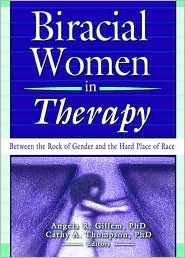Experiences and Processes Affecting Racial Identity Development: Preliminary Results From the Biracial Sibling ProjectPosted in Articles, Family/Parenting, Identity Development/Psychology, Media Archive on 2010-08-24 04:10Z by Steven |
Cultural Diversity & Ethnic Minority Psychology (formerly Cultural Diversity and Mental Health)
Volume 4, Number 3 (August 1998)
pages 237-247
DOI: 10.1037/1099-9809.4.3.237
Examined what drives the process of racial identity development in general for persons of mixed racial heritage and what experiences account for some differential choices within the same family. 20 sibling pairs of mixed racial heritage (aged 18–40 yrs) completed packets including an extensive background questionnaire, a body image inventory, a racial resemblance inventory, a sibling racial resemblance inventory, a brief mental health inventory, a racial experiences inventory, and an identity questionnaire. Ss also participated in two 2-hr interviews. Four types of experiences surfaced that appear to influence the identity process: hazing, family dysfunction, other salient identities, and the impact of integration. These experiences were explored within the framework of the ecological model of racial identity development.
Read the entire article here.



